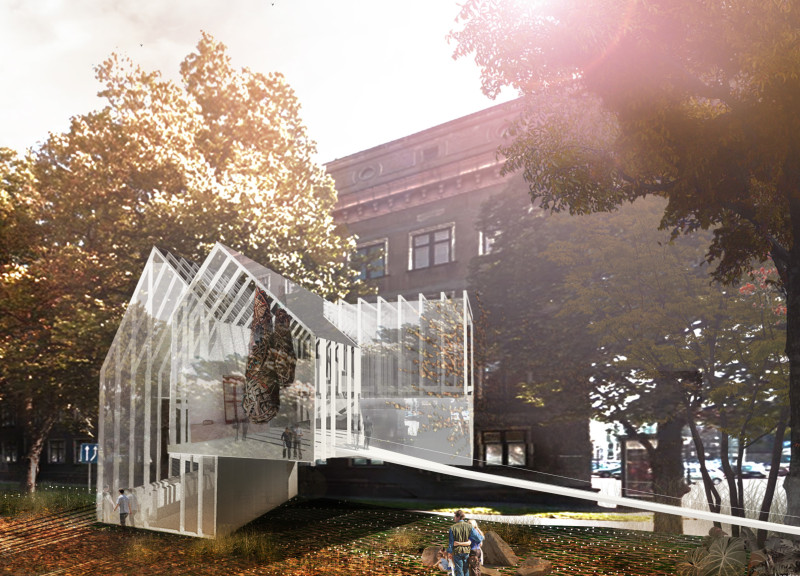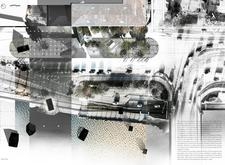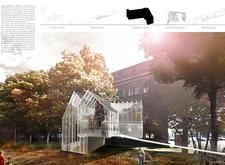5 key facts about this project
## Overview
The "Iconographies of Memory" memorial, located in Riga, Latvia, is dedicated to the Baltic Way, a peaceful demonstration that unified the Baltic states of Estonia, Latvia, and Lithuania in 1989. This project emerges within the urban landscape of Riga, emphasizing the historical significance and collective resilience of the Baltic peoples. The design intent is to create a space that fosters reflection and community engagement while honoring the memory of significant historical events.
## Spatial Engagement and User Experience
The architectural strategy includes several distinct components that promote interaction and contemplation. The Transit Houses, with their minimalistic forms, serve as gathering points that host exhibitions and events, embodying the communal spirit of the original demonstration. Landscapes Observatories are strategically positioned to integrate with the natural surroundings, offering visitors opportunities for reflection and a deeper connection to the environment. The architectural design facilitates movement through ramps and platforms, encouraging an immersive experience as visitors navigate through the site.
## Materiality and Structural Themes
Key materials employed in the design include glass, concrete, natural stone, and metal, each contributing to the overall narrative of the memorial. Glass enhances transparency and connects interior spaces with the outdoors, while concrete serves as a durable foundation symbolizing resilience. Natural stone elements resonate with the region's geological history, and metal accents introduce textural diversity, creating a harmonious balance between various materials. This thoughtful selection not only supports structural integrity but also enriches the sensory experience of the site.






















































